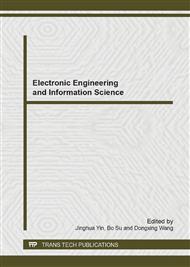p.620
p.624
p.628
p.632
p.636
p.641
p.647
p.653
p.657
Research on the On-Line Measuring Method of Transformer Short-Circuit Reactance
Abstract:
The short-circuit reactance is an important parameter to characterize the transformer ability to resist the attack of short-circuit current in the design the operation process. In this paper, the on-line measuring method for short-circuit reactance based on electrical parameters' characteristics was presented, and the feasibility to carry out on-line monitoring for the transformer operation condition was also analyzed. Besides, the principle of two on-line measuring methods based on respectively exciting current compensation and elimination technique was researched, and the calculation equations were deduced. The comparison between the on-line results measured from moving mold experiment and those from off-line short-circuit experiment showed that these two methods were accurate and valid.
Info:
Periodical:
Pages:
636-640
Citation:
Online since:
July 2014
Authors:
Price:
Сopyright:
© 2014 Trans Tech Publications Ltd. All Rights Reserved
Share:
Citation:


